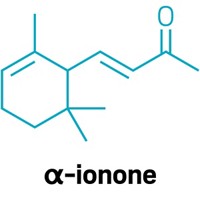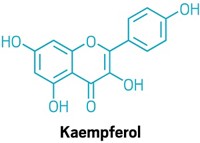Advertisement
Grab your lab coat. Let's get started
Welcome!
Welcome!
Create an account below to get 6 C&EN articles per month, receive newsletters and more - all free.
It seems this is your first time logging in online. Please enter the following information to continue.
As an ACS member you automatically get access to this site. All we need is few more details to create your reading experience.
Not you? Sign in with a different account.
Not you? Sign in with a different account.
ERROR 1
ERROR 1
ERROR 2
ERROR 2
ERROR 2
ERROR 2
ERROR 2
Password and Confirm password must match.
If you have an ACS member number, please enter it here so we can link this account to your membership. (optional)
ERROR 2
ACS values your privacy. By submitting your information, you are gaining access to C&EN and subscribing to our weekly newsletter. We use the information you provide to make your reading experience better, and we will never sell your data to third party members.
Business
Fragrances 101: A Fortuitous Field Of Flavors & Fragrances
by Melody M. Bomgardner
July 16, 2012
| A version of this story appeared in
Volume 90, Issue 29
Valencene
Juicy, orange, sweet, and woody scent.
Extracted from the peel of the Valencia orange.
Used in fragrances and in flavorings for beverages and chewing gum. Valencene is also used in the production of nootkatone, the main component of grapefruit flavor and aroma.
Picrocrocin
Bitter, saffron flavor.
Extracted from saffron, a spice derived from the flower of the saffron crocus Crocus sativus. Along with safranal, it is one of two main saffron volatiles.
Used for food flavoring and for its natural yellow color. It is an expensive raw material with prices averaging around $2,000 per kg.
Linalool
Fresh, sweet, pine, and floral scent.
Component of many essential oils including lavender, rosewood, and coriander. Natural linalool is extracted from Brazilian rosewood. It also can be derived from citrus peel oils, from the pine chemicals α- and β-pinene, or by total chemical synthesis.
A common fragrance ingredient in perfumes, soaps, detergents, and personal care products. Linalool is also used to flavor citrus beverages.
Nerolidol
Mild and delicate sweet, floral, green, and woody scent.
Commonly found in the essential oils of many plants and flowers. It is the main component of neroli oil, derived from the flowers of the bitter orange tree. Synthetic nerolidol is made from linalool.
Widely used in perfumery and in flavoring for citrus, fruit, and berry complexes.
Patchoulol
Earthy, woody, and camphorous fragrance.
Derived from Pogostemon cablin, an herb of the mint family. It is a major component of patchouli oil, a substance that contains at least 24 sesquiterpenes.
Widely used in perfumery and to scent consumer goods including paper products and detergents. Patchouli oil is used in many types of incense.
Sclareol
A mellow, warm, and herbal scent.
Derived from clary sage, which is commonly grown in the Mediterranean and has a history of use as a medicinal herb.
Being studied for possible anticancer effects. The natural essential oil of clary sage is used in aromatherapy for relaxation.
Vanillin
Strong, sweet, and milky scent.
Main fragrance component of natural vanilla extract.
Derived from orchids of the genus Vanilla, found mostly in Madagascar. Vanillin can be made synthetically from lignin-containing wood pulp waste or from phenol.
Widely used in confectionery and dairy products. Vanillin is also used in fragrances for perfumes and cleaning products, and in flavorings for pharmaceuticals and animal food.
SOURCES: Patent filings, International Fragrance Association, PubChem, company information




















Join the conversation
Contact the reporter
Submit a Letter to the Editor for publication
Engage with us on Twitter